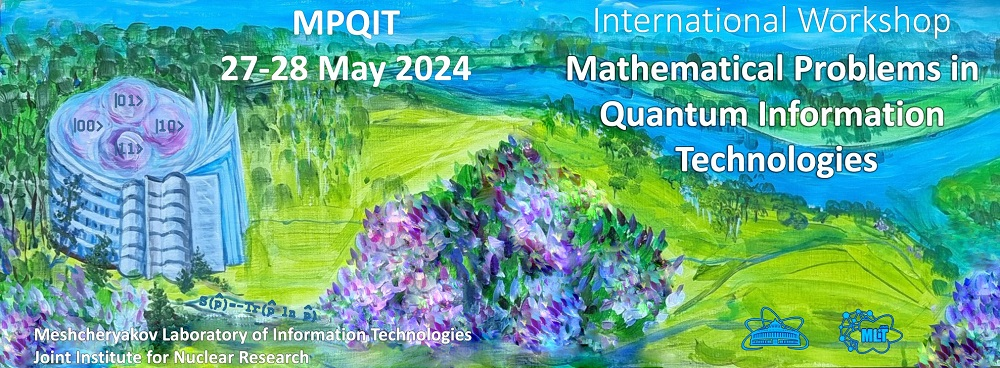Speaker
Description
In [1] we have proposed a cryptographic quantum hash function and later in [2] provided its generalized version for arbitrary finite abelian groups based on the notion of $ε$-biased sets. However, the physical implementation of such functions nowadays poses a great challenge for the engineers since the proposed constructions of quantum hashing require completely entangled quantum states, which are hard to create and maintain. Therefore, in [3] we have proposed a simplified version of the quantum hash function that minimizes quantum state engineering and experimentally verified the collision resistance of such function. In this research we improve this approach by introducing a dense encoding of the classical information by the quantum states.
Let $S={s_1,…,s_m}⊂Z_q$ be the set of numeric parameters. We propose a quantum hash function $\psi(x,y)$ that encodes classical information by the following superposition:
$$|\psi_j (x,y)⟩=\cos{\frac{\pi s_j x}{2q}}|0⟩+e^{i2\pi s_j y/q}\sin{\frac{\pi s_j x}{2q}} |1⟩,$$ $$|\psi(x,y)⟩=|\psi_1 (x,y)⟩⊗|\psi_2 (x,y)⟩⊗⋯⊗|\psi_m (x,y)⟩.$$ That is, the quantum hash $|\psi(x,y)⟩$ of the classical input $(x,y)$ is composed of $m$ independent hashes $|\psi_j (x,y)⟩$ of smaller size. The only difference between them is the value of the numeric parameter $s_j$. The pair of arguments $(x,y)$ can be interpreted as the split of a larger input, or as a pair of an input and a key. In any case this means that we can double the amount of information encoded in the same number of qubits as compared to [3]. The main idea behind quantum hashing is to provide the minimal fidelity of different quantum hash codes (collision resistance) with the minimal possible number of qubits (that affects the one-way property) [4]. The fidelity in our case can be expressed by the following formula: $$\prod\limits_{j=1}^m\cos^2\frac{\pi s_j (x_2-x_1)}{2q}-\sin\frac{\pi s_j x_1}{2q} \sin\frac{\pi s_j x_2}{2q} \sin^2\frac{\pi s_j (y_2-y_1)}{q}.$$ The formula above gives the probability of considering hashes $|\psi(x_1,y_1 )⟩$ and $|\psi(x_2,y_2 )⟩$ to be equal, and the set of parameters $S={s_1,…,s_m}$ should be computed as the result of minimization of this formula over all pairs of unequal inputs.
References
- Ablayev F.M., Vasiliev A.V. Cryptographic quantum hashing // Laser Physics Letters. – 2014. – V.11, No. 2. – Art. No. 025202.
- Vasiliev A. Quantum hashing for finite abelian groups // Lobachevskii Journal of Mathematics. – 2016. – Vol. 37, No. 6. – P. 751-754.
- Turaykhanov D.A., Akat’ev D.O., Vasiliev A.V., Ablayev F.M., Kalachev A.A. Quantum hashing via single-photon states with orbital angular momentum // Phys. Rev. A. – 2021. – V. 104. – Art. no 052606.
- Ablayev F., Ablayev M., Vasiliev A. On the balanced quantum hashing // Journal of Physics: Conference Series. – 2016. – Vol. 681, No. 1. – Art. No. 012019.

